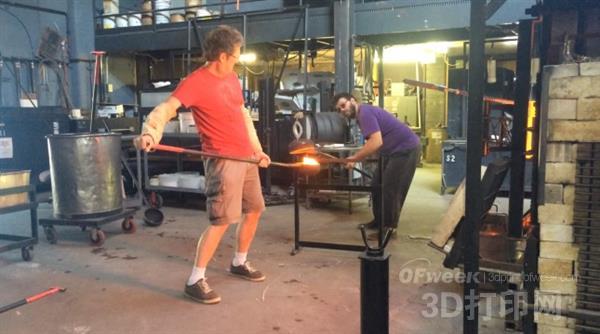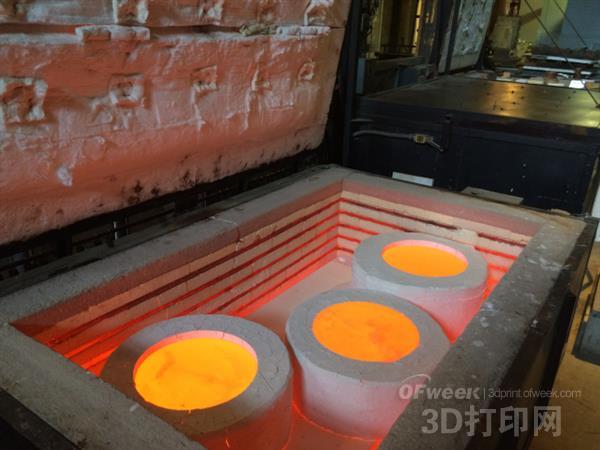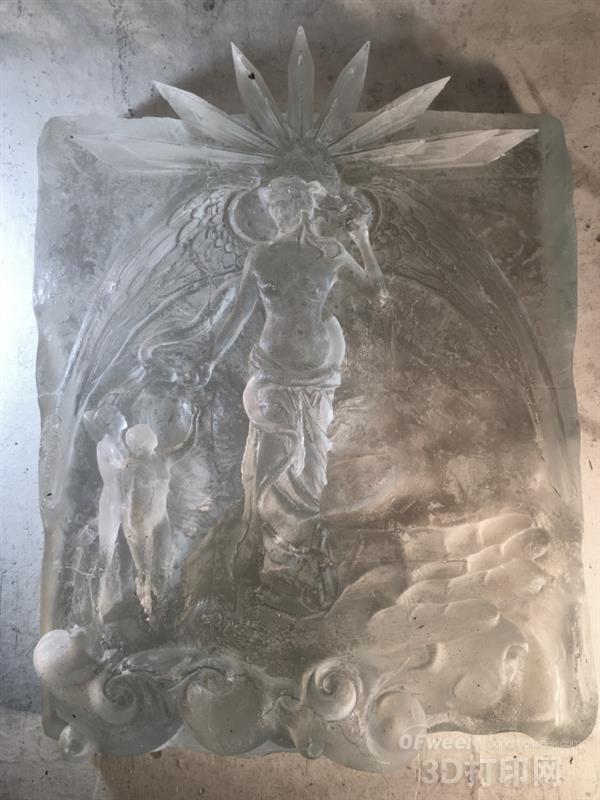Although 3D printing technology is essentially a very modern production process, there are still many artists in the world who are continually trying to combine it with technologies such as ceramic modeling and glass casting that have existed for centuries. It’s amazing. For example, 3D printing art master and pioneer Great Fredini combined glass casting with 3D printed PLA molds to create some beautiful glass works.

If the name Great Fredini sounds familiar, it may be because he has been doing some experimental 3D printing projects in recent years. He has reported on his 3D printing of the world's largest opinion installation art. His real name is Fred Kahl, from Brooklyn. For most of 2015, he studied the CAD-based sculptural form and glass casting at the Wheaton Art and Creative Glass Center in the United States. “I used to create glass many years ago, but now most of my art is based on 3D scanning and printing,†he explained.

He went on to say that last year he decided to explore a range of casting techniques with the help of 3D printing technology, which led to some interesting results. “My work usually starts with 3D scanning, mainly using Primessense/Kinect-style devices for structured light scanning, and occasionally using photogrammetry for some non-human objects. Other non-organic forms are modeled directly on the computer. The software I usually use is Zbrush," he said as he introduced his design process. The final step in these designs is often 3D printing. But in recent projects, 3D printing is not the final step in the process.

In fact, he used a lost casting technique, basically a 3D printing + PLA version of lost wax casting. Similar to the lost wax method, he began to print the object with PLA and then made the mold with gypsum/silicon. In order to eliminate the gap in the surface of the 3D printed PLA object, he applied a layer of wax on his surface.

After the plaster mold is manufactured, it is customary to heat it in the oven. But Fred soon discovered that this process was not that easy when using PLA materials. Wax usually evaporates quickly, but PLA is hard to do. “Although PLA is essentially biodegradable cornstarch, it produces black smoke when it burns, which is not conducive to the surrounding environment. So I had to deal with it at night when no one was in the studio. I put it in the oven first at 300 Roast for about three hours in a Celsius environment, then raise it by about 100 degrees Celsius every hour." He described the difficult process: "When I reached about 450 degrees Celsius, I had to go in (wearing gloves, Glasses and masks), when you start to melt, use pliers to clip out some large pieces of plastic. Be careful when you do this to avoid damaging the mold. When the temperature reaches about 700 degrees Celsius, I will put the stainless steel dropper into it. As much as possible, suck out some molten plastic.†Obviously, the smell is definitely bad. By the way, there is actually a more applicable material purely (Moldlay wire developed by Kai Parthy), but Fred didn't find it until the end.

Although this method is very hard, it is still effective - Fred finally gets a plaster mold and then injects molten glass into it. To this end he tried two techniques. The first is what he calls "Lacrosse Casting", which mainly transfers molten glass from one ladle to another to remove all the foam and remove all the foam. Unfortunately, this very time-consuming technique can easily damage the mold, although some results have proven to be quite good.

So Fred switched to the second method, which required the use of crystal glass – more expensive, but the result of the casting was clearer. “After the mold is burned, I will let the oven slowly return to room temperature, so I can empty it carefully and then put it on a piece of glass,†he explained. “These pieces can be loaded into the mold and placed in the oven, and the temperature slowly rises back to 1550 degrees Celsius until they are completely melted, and some bubbles float out of the surface. Then the temperature of the oven drops below 1000 degrees Celsius. The process proved to be the best technique for losing PLA casting, and the results were amazing. But unfortunately, the use of crystal glass made the whole project quite expensive."

Through the above process, Fred proved that the use of the PLA method can be used to cast custom glass works, although the results are much better when using Moldlay wire. By the way, Fred also tested graphite molds that were engraved with CNC and were reusable, making them more cost effective. “Lost PLA casting also requires a lot of work to peel off the work from the mold and then grind and polish. Losing the PLA castings also requires extensive work stripping from the mold, then grinding and polishing. I have long wanted to experiment with CNC Engraving instead of 3D printing technology," he explained. Below you can see the effect obtained with a graphite mold, a prominent feature is very clear.
Wire Stainless Steel Product.
China Kitchen Rack,Sink Grid,Stainless Mesh Storage Baskets,Kitchen Wire Storage, we offered that you can trust. Welcome to do business with us.
Kitchen Rack is made of high quality 304 stainless steel, This kind of material steel luxury, never rust, resist corruption, easily clean, safe, healthy and durable. Prevent rust or chemicals from contaminating food and damaging health
Bread basket,dish rack,chopping board holder,Sink Grid,dish drying rack
Shenzhen Lanejoy Technology Co.,LTD , https://www.szbrassnuts.com